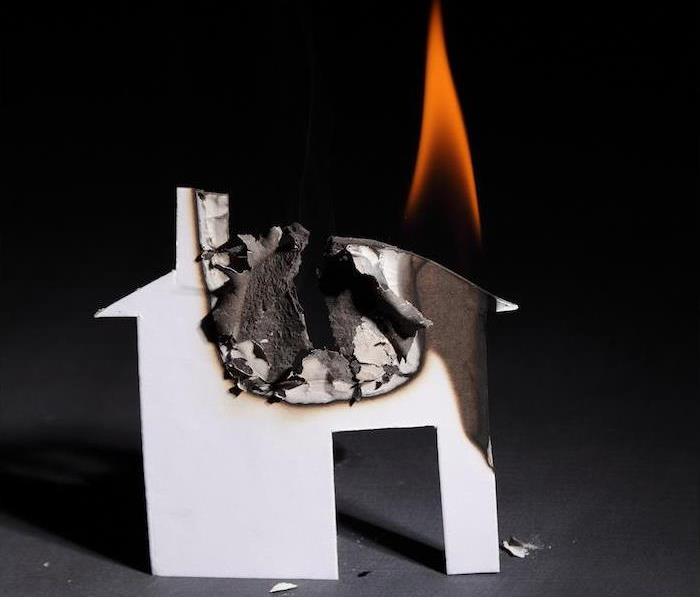Fires Require These 4 Things | SERVPRO® of Northwest Bergen
1/25/2022 (Permalink)
 If your home or business has any damage, SERVPRO of Northwest Bergen is ready around the clock to help you recover.
If your home or business has any damage, SERVPRO of Northwest Bergen is ready around the clock to help you recover.
What geometric shape has four equal, triangular sides? If you guessed tetrahedron, congratulations on your junior high math recall!
If you’re afraid you may have accidentally stumbled onto a geometry blog, have no fear: It’s about fire safety!
Scientists use a pictorial representation called the fire tetrahedron (formerly the fire triangle) to help us visualize the things that a fire must have in order to originate. These must-haves for fire also give us insight into ways we can counteract fires—by removing or stopping the things fires need to survive.
Fuel. This would be what you say the fire burns. Everything from building materials to inorganic plastics are candidates to be fuel, because almost everything burns.
Heat. Every fuel source has a temperature at which it will ignite—for some materials this flash point is lower than others.
Oxygen. If the fuel source is what a fire eats, oxygen is what it breathes. Fires consume oxygen in the area surrounding the flames.
Chemical Chain Reaction. The three elements above have to stay readily available, and the oxygen in particular helps to create a chain reaction that perpetuates the growth of the fire.
Cool it. If a material has to reach a certain temperature before it will burn, it stands to reason that making that material fall below that threshold will stop it from burning. Cooling the material (typically by using water), restores a thermal balance that causes the fire to stop.
Smother it. Fire extinguishers and foam use this method, which cuts off the supply of oxygen the fire needs in order to thrive.
Starve it. If a fire has nothing to eat, it has no choice but to stop. This method can be used in many applications, but the most common you’d probably recall is the creation of a burn barrier around wildfires, scorching a perimeter around the flames to give them no further ground through which they can spread.
Interrupt the chain reaction. Certain elements and gases can actually stop fires by being introduced into the atmosphere around a fire to disrupt the constant reaction that keeps it going. Halon is the best, most effective example, but its negative effect on the ozone layer has seen its use decline and its availability decrease.
If the fire tetrahedron makes a wreck of your home or business, we’re ready around the clock to help you recover. Contact SERVPRO of Northwest Bergen anytime for fast, thorough cleanup and recovery after a fire.




 24/7 Emergency Service
24/7 Emergency Service